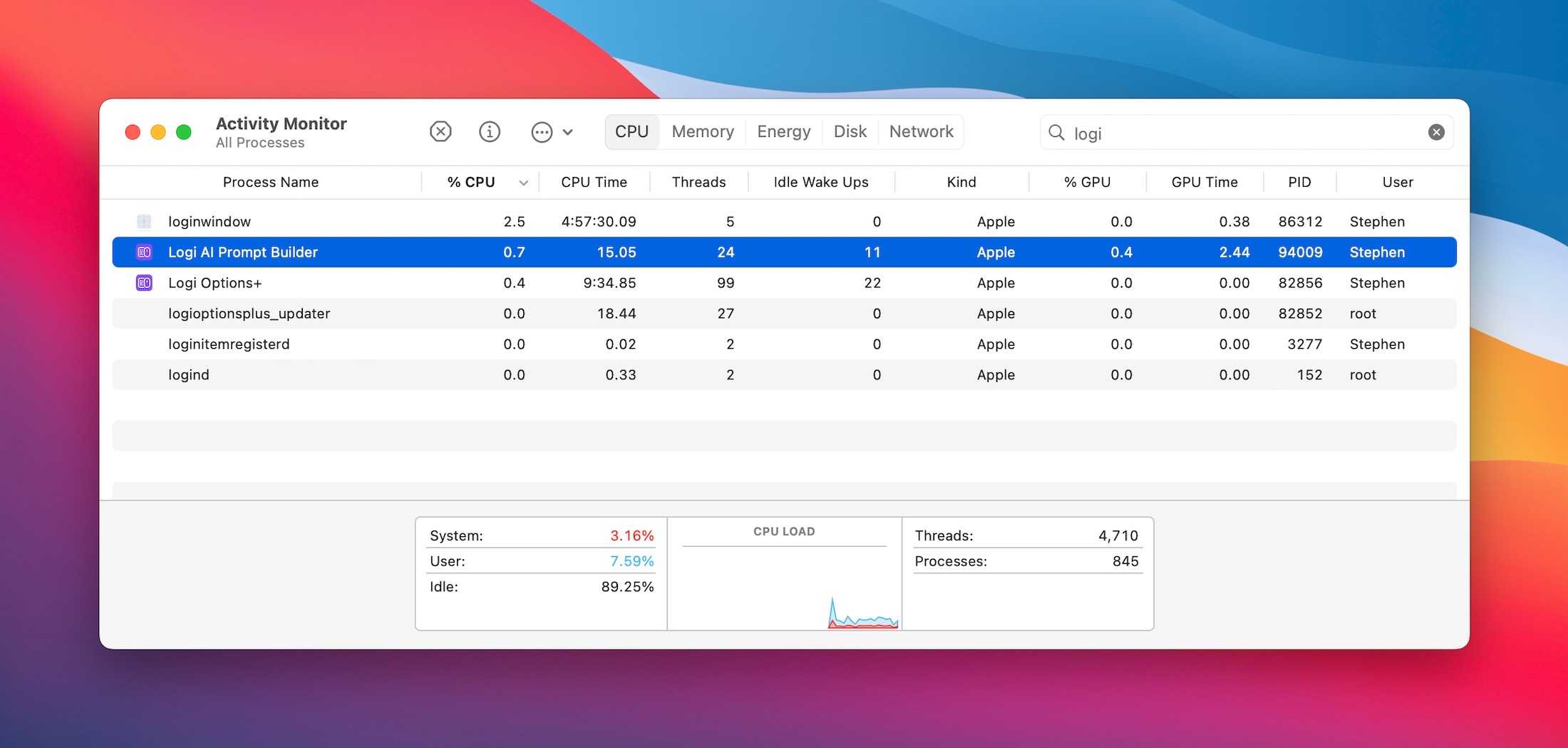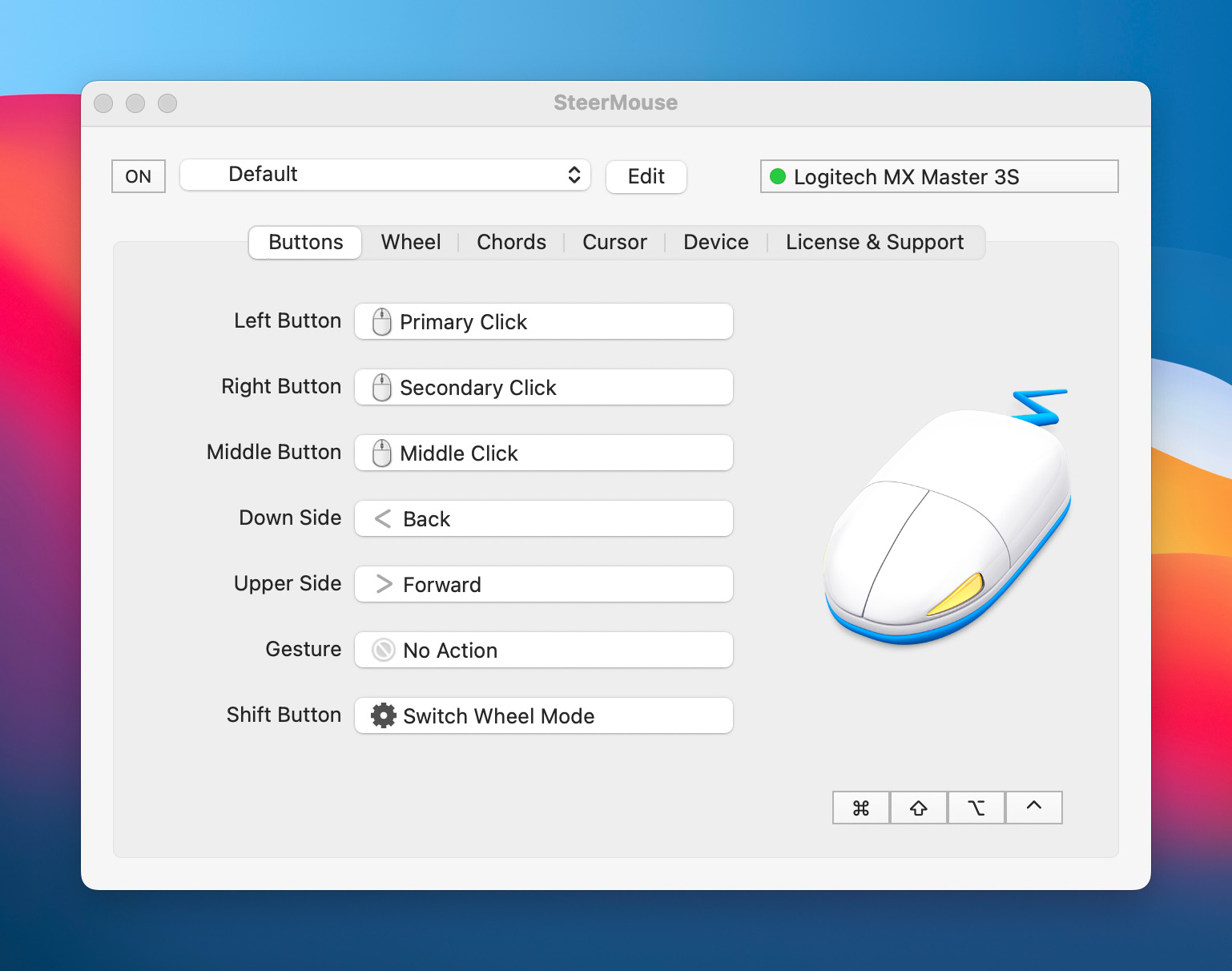I recently noticed a new folder in the root level of my Home directory, named ai_overlay_tmp:

In preparation for a future Mac Power Users episode, I’ve been playing with a bunch of AI software, and I assumed something I downloaded generated this folder. I deleted it, just to be frustrated when the folder reappeared on its own.
Adding a new folder to the Home directory is a Cardinal Sin of Mac Programming, so I was on a mission to root out the cause. After some searching online, it seems that this folder was generated by Logi Options+, the software that came with my mouse, the Logitech MX Master 3S.
Version 1.70 of Logi Options+ launched last week with — I kid you not — AI tools you can launch anywhere your cursor is located:
In today’s fast-paced, technology-enabled world, everyone is learning to work differently with breakthroughs in Generative AI.
Mastering prompt building enhances your efficiency and creativity. That’s why we developed the Logi AI Prompt Builder, a time and click-saving solution. Rephrase, summarize, and create custom-made prompt recipes with ChatGPT faster, with virtually no disruption to your workflow.
I cannot tell how little I want THE SOFTWARE FOR MY MOUSE to include features tied to ChatGPT … let alone a mouse with a built-in button to start a prompt.
These features are spun up into their own process named “Logi Al Prompt Builder” as you can see here:

Best I can tell, there’s no way to disable these features, and they are automatically loaded with the Logi Options+ software is running. Some people have suggested running the “Offline” version of Options+ to avoid these features.
Update: You can also jump through these hoops to disable the AI features in the regular versions of Options+.
That seems to have done it for me, but only after I nuked everything Logitech off my system, including a 700 MB support folder buried in my Home folder. (Thanks, Hazel!)
Of course, you don’t need Logitech software to use a Logitech mouse once the initial settings are in place. For future tinkering, I’ve decided to check out SteerMouse and keep Logitech software off of my system.
As you can see, it can be used to adjust parameters on my MX Master 3S just fine, without any AI-powered bloatware:

I know AI is all the rage right now and having a deal to bring ChatGPT into your software is trendy, but including a tool like this in what is basically a mouse driver is ridiculous. I’m not opposed to using AI in software. I’m just opposed to when it shows up as an unexpected, poorly-implemented feature in software that doesn’t need it.
At least Logitech’s Mac developers did such a bad job with it, that it was easy to spot.